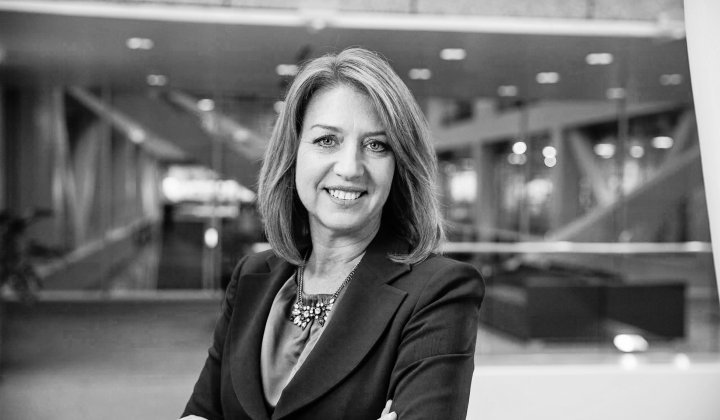In the 2017 budget speech, Minister of Finance, Pravin Gordhan noted that, “Transformation must unleash growth, establish a new economic direction, mobilise investment, empower the masses and create new resources for social change.” The minister’s vision has been realized by the agents of this transformation, not least of all being Thakhani Makhuvha, the CEO of sefa and his innovative team dedicated to being catalyst for growth of the SMMEs.
The history of sefa
The Small Enterprise Finance Agency was founded five years ago, by amalgamating Khula Finance Enterprise, SAMAF (South African Micro-Finance Apex Fund) and the small business loan book of the IDC. The benefits of forming sefa are being seen on many levels and felt by an increasing number of small to medium-sized enterprises. “Last year, we supported a little less than 55 000 small businesses and co-ops, creating 75 000 employment opportunities, largely in the informal sector,” Makhuvha states, “we are committed to increasing our footprint in all the provinces and industry sectors to give access to finance targeted at young people, women, rural businesses and people with disabilities. In total over the past four years, we have assisted 198 000 SMMEs and created, on average 202 000 jobs. This is our contribution so far to goverment’s 2030 plan of job creation and economic transformation.”
Partnerships and direct lending
Using key partnerships with SEDA, the National Treasury and the dti (the Department of Trade and Industry), sefa has developed a parallel lending model that not only utilises intermediaries but does direct lending to businesses that meet the agency’s lending criteria. Within it's first year of being in operation, sefa managed to reach twice the number of businesses than its predecessor. This is because of adding to the portfolio of lending models, a direct model that caters for bridging finance as well as term loans.
The agency has even created specialised channels of lending to those with disabilities. Amavulandlela scheme is a financing product that offers direct lending to those who qualify at an interest rate of 7%, which is far below the average of any other traditional credit provider.
“We have a higher risk appetite,” says Makhuvha, “we invest in sectors that traditional channels view as too risky. This includes the informal trading markets like spaza shops and fresh produce markets, such as those in the East of Johannesburg, city center Durban and Mangaung. We have invested in a wide range of sectors, from funeral services to agri-processing, some directly and others through strategic partnerships with stakeholders. A working example of this is our partnership with the SA Taxi Association, where we provide bridging finance to support entrepreneurs starting and scaling businesses in the transport industry.”
Beyond financing towards real investment
The innovative approach to finance has a multi-layered intervention process that tackles the various challenges that SMMEs and co-ops in South Africa face. The agency is comprised of a structured finance team to address the capital needs of each applicant on a personalised basis. Added to that is a team of 130 discipline-specific mentors that walk alongside successful candidates and add strategic value to the businesses, lowering the default risk on the loans. Apart from the mandatory mentoring and advice, the agency also has a post-investment monitoring department to constantly improve the way funding is made available, and to investigate ways of including disruptive technology in their offerings.
The application procedure requires candidates to submit a business plan that is stress tested to evaluate viability within the macro and micro influences of the sector in which that business is operating. This includes the regulatory compliance documentation of tax clearance certificates and CIPC registration documentation. Included in the application, the entrepreneur or key person in the business, must undergo behavioural scoring and individual assessment.
“Unlike most lenders,” Makhuvha explains, “we are governed by the National Credit Regulator but we do not require an owner’s contribution or collateral to be attached in the terms of the loan. Thus we require that the entrepreneur goes through our processes which give us a better understanding of how to support the individual and the business.”
Understanding the nature of SMMEs
sefa, in the last five years, has clearly understood the intricacies and challenges of starting and running a business in today’s economy and has taken up the responsibility of addressing cash flow issues by reducing the turnaround time on required financing. After receiving credit committee approval , the agency aims to provide quick turnaround times on term and bridging loans. The agency also offers a capital holiday of three to four months, subject to the nature of the business.
These structures are put in place to counteract the high failure rate of small and medium size enterprises and are aligned with the government priority of supporting entrepreneurial activity in a tangible manner. “At sefa we support the 30% set aside by government in the 2030 plan to develop SMMEs initiatives in every government department, as well as creating centralised financing. We believe in collaborations on the ground and within parastatal institutions and intermediaries. We have learned some valuable lessons since our inception and we keep evolving to best serve the saviours of our economy,” states Makhuvha.




